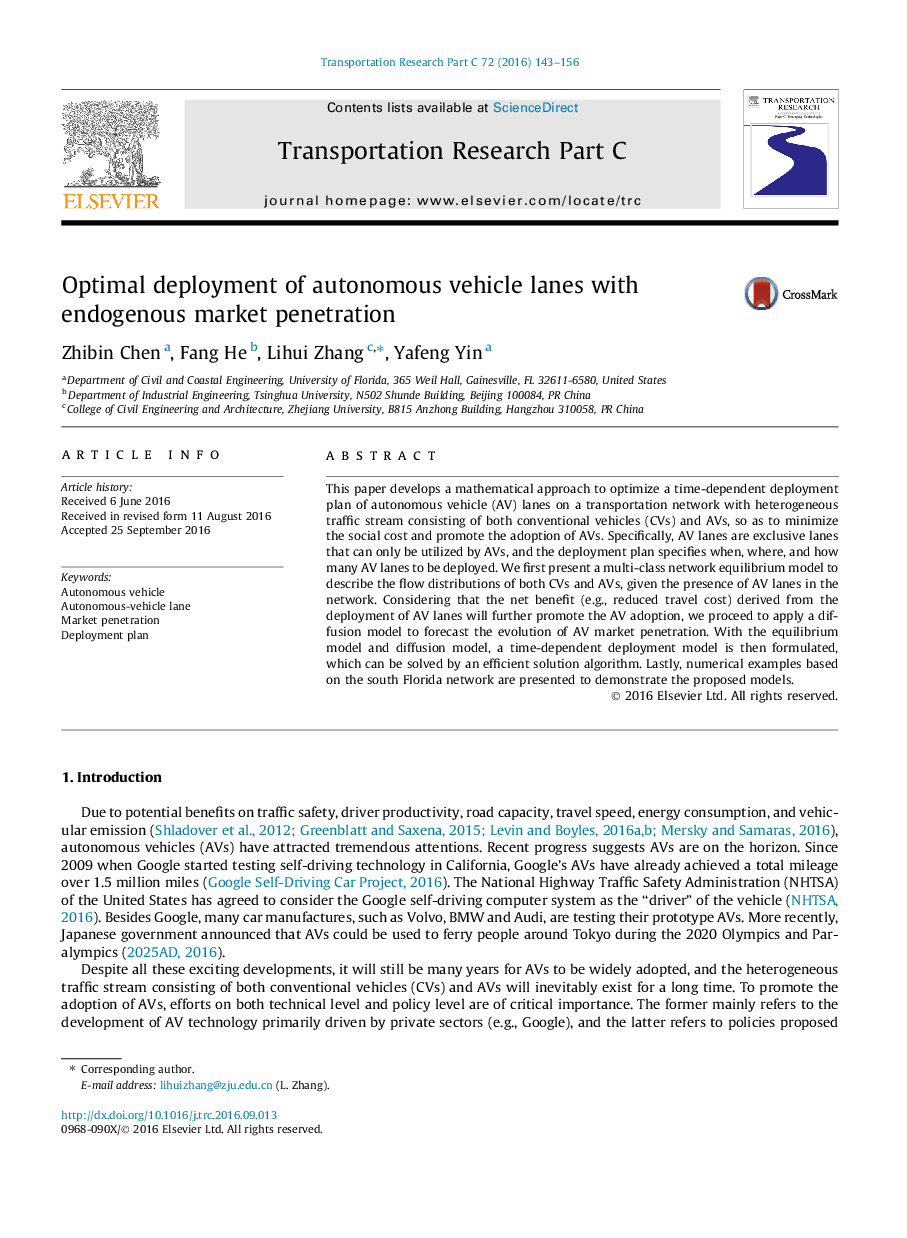| Article ID | Journal | Published Year | Pages | File Type |
|---|---|---|---|---|
| 4968676 | Transportation Research Part C: Emerging Technologies | 2016 | 14 Pages |
Abstract
This paper develops a mathematical approach to optimize a time-dependent deployment plan of autonomous vehicle (AV) lanes on a transportation network with heterogeneous traffic stream consisting of both conventional vehicles (CVs) and AVs, so as to minimize the social cost and promote the adoption of AVs. Specifically, AV lanes are exclusive lanes that can only be utilized by AVs, and the deployment plan specifies when, where, and how many AV lanes to be deployed. We first present a multi-class network equilibrium model to describe the flow distributions of both CVs and AVs, given the presence of AV lanes in the network. Considering that the net benefit (e.g., reduced travel cost) derived from the deployment of AV lanes will further promote the AV adoption, we proceed to apply a diffusion model to forecast the evolution of AV market penetration. With the equilibrium model and diffusion model, a time-dependent deployment model is then formulated, which can be solved by an efficient solution algorithm. Lastly, numerical examples based on the south Florida network are presented to demonstrate the proposed models.
Related Topics
Physical Sciences and Engineering
Computer Science
Computer Science Applications
Authors
Zhibin Chen, Fang He, Lihui Zhang, Yafeng Yin,
